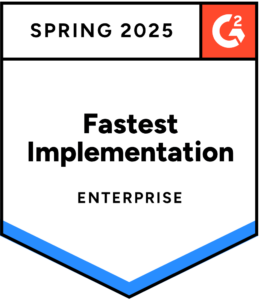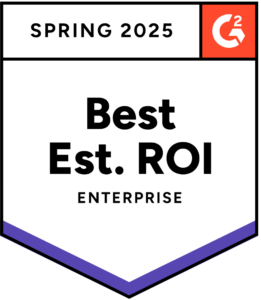3 Reasons Why SOX Compliance Requirements Benefit CFOs
Blog post
Share
Because CFOs are required to take responsibility for their company’s financial reports under SOX, the overall accuracy of those reports should be a top priority. Despite this, 40% of IPOs in 2020 disclosed a material weakness in their initial registration forms. Clearly there is room for improvement, no matter a business’s relation to SOX laws.
In broad terms, SOX compliance requirements apply to publicly traded companies that do business in the United States, along with accounting firms that audit those companies. While private companies aren’t required to comply with all of SOX by law, they can still benefit from adopting an internal control system. Plus, private companies that are planning an Initial Public Offering (IPO) should prepare to comply with SOX before they go public. No matter its size, scale, age, or status, it’s clear that any business can benefit from adopting SOX compliance requirements.

Benefits Provided by SOX Compliance Requirements
#1: Provide an established framework through modern tools
At its core, an effective internal control system enables a company to manage the risk of financial inaccuracies, whether intentional or by error. The program enables management to:
- Identify areas of risk
- Create controls to reduce the chance of risk
- Test the effectiveness of those controls
- Confirm that an effective control standard is in place
When SOX was first established in 2002, there were a number of growing pains for companies having to create and adopt new controls from nothing. However, establishing a compliance program is much easier today due to the availability of automated software solutions, like those offered by Trintech.
Trintech’s solutions prove to be effective tools for creating a SOX framework through:
- Providing a centralized and securely managed database for all transaction information
- Automating reconciliations and associated management responsibilities
- Providing configurable process updates in real time
The financial and time investments required for complying with SOX requirements are no longer the burden they used to be, thanks to new developments in software being able to shoulder most of the burden.
#2: Secure your assets with secure backups and change management protocols
By implementing SOX compliance requirements, companies are safer from any data breaches and their expensive—and often embarrassing—aftermath. Cleanup can get messy and costly, and some companies might never recover from the damage done to their brand in the public eye. While most organizations have some sort of framework in place, some are more effective than others.

A SOX auditor will investigate four internal controls as part of a yearly audit. To be SOX compliant, a company must demonstrate its capability in the following controls:
Data Backup: Maintain SOX compliant off-site backups of all financial records, ideally in the cloud.
Security: A company’s internal control system must demonstrate protections against data breaches. How each business chooses to implement this control is up to them.
Access: Here, access means both physical and electronic. Whether it’s securing doors and badges or monitoring login policies and permissions, using a least permissive access model means each user only has the access necessary to do their jobs. This is just one of many SOX compliance requirements.
Change Management: How a company adds and maintains users, installs new software, and makes any changes to databases or applications that manages company financials can impact SOX compliance.
#3: Improve board of directors and investor confidence through increased visibility
Businesses can see tangible benefits in adopting SOX standards, whether they’re fully required or not. SOX compliant companies report that their financials are more predictable, which makes stockholders and board members happy. Companies also report that their improved financial reporting creates more opportunities for them. Publicly traded companies can have easier access to capital and higher valuations. Private companies seeking a buy-out or an IPO might see their deals close faster, since SOX compliance is the standard to meet.
Next Steps for CFOs
Whether a company is adopting SOX compliance requirements for the first time or seeking a refresher, reviewing any internal control system is a great place to start. Automation software can standardize processes across the business and increase visibility into critical tasks while securing all data in the cloud. CFOs looking to strengthen their SOX compliance should start by identifying any risk-heavy manual processes and looking to technology solutions.
[cta-content-placement]
Written by: Nathan Stabenfeldt






